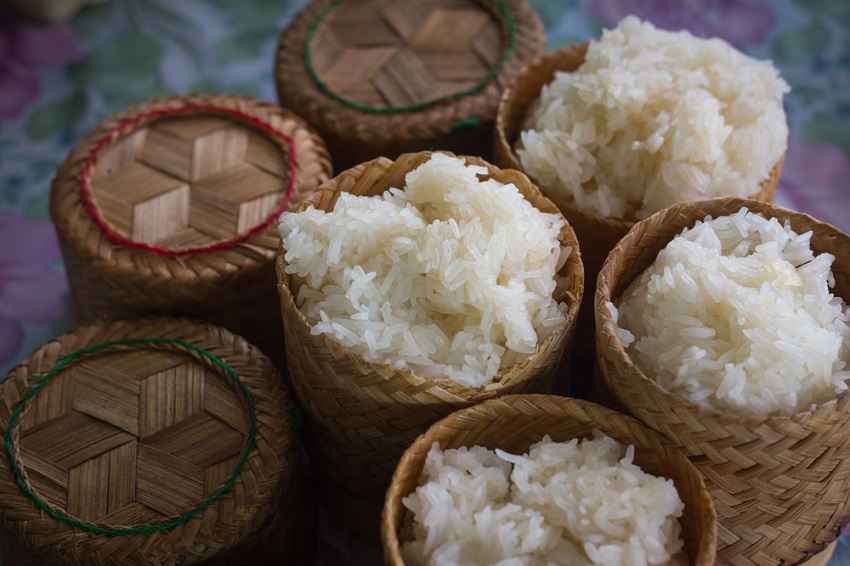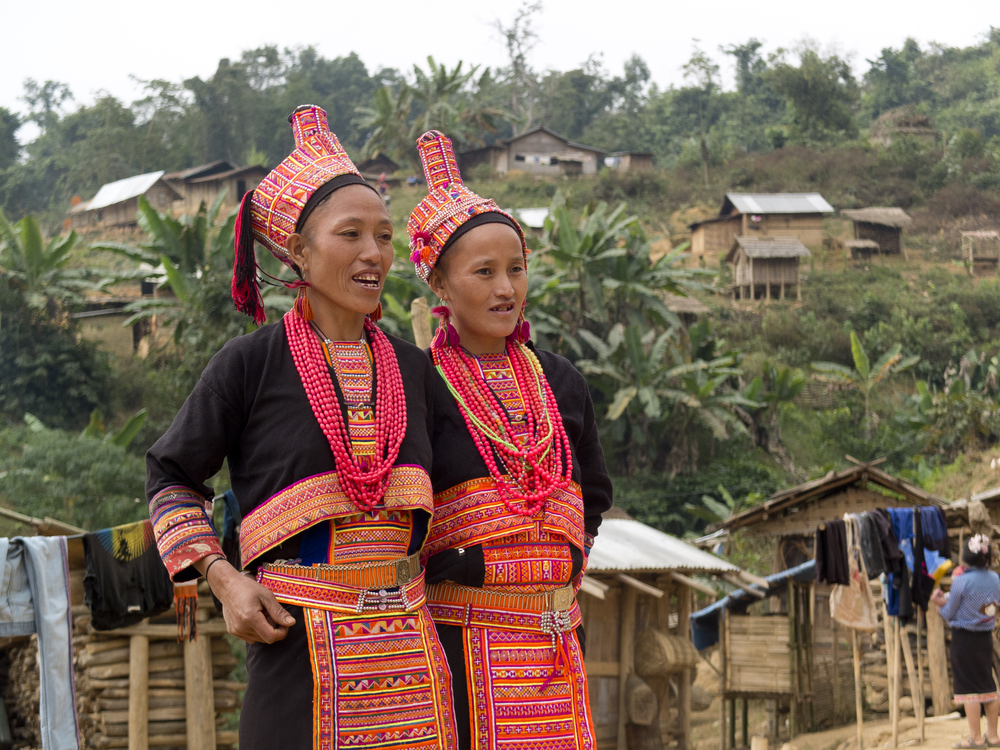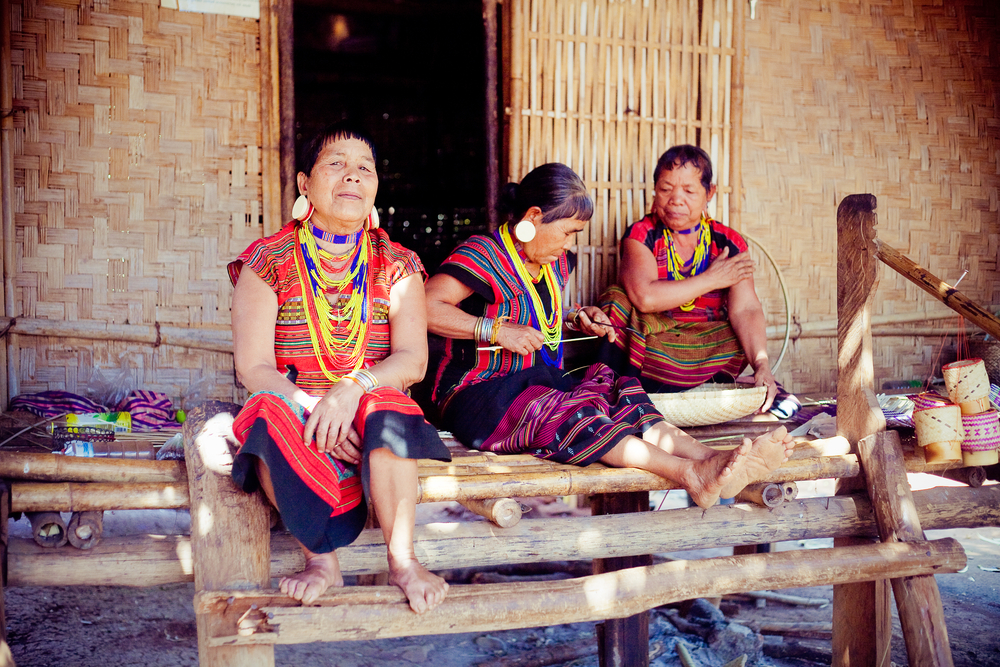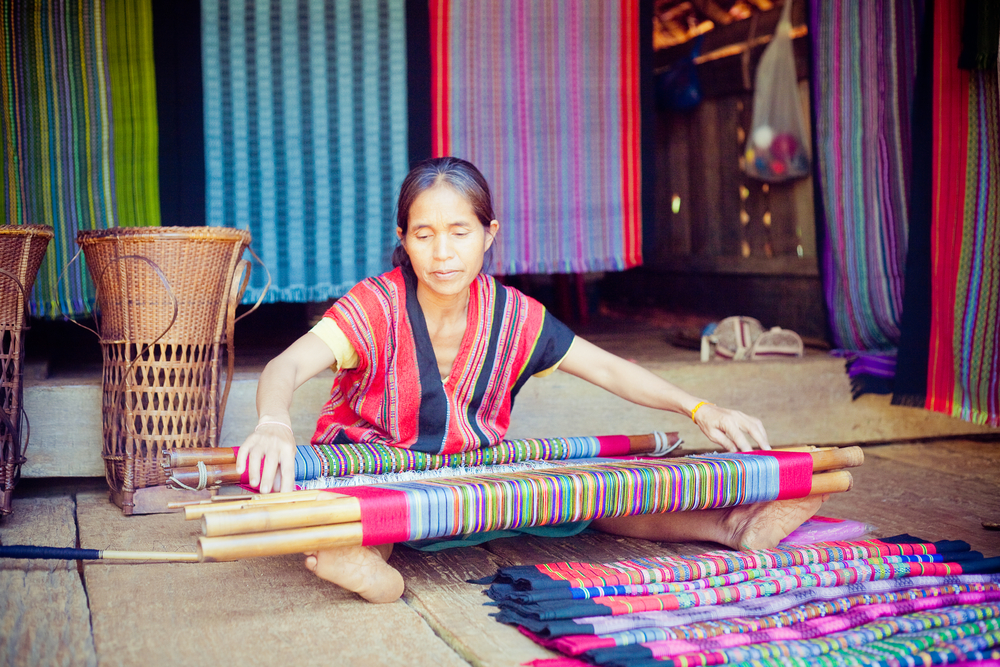Laos - food
In general, Lao food is almost raw and simple giving mild flavors. Its cooking process is not complicated. Though the royal dishes can be more complex, the philosophy of simplicity remains evident in those dishes. Lao food has these distinctive characteristics: (1). Fish and vegetables are the main ingredients due to natural abundance such as Mekong River fishes which are considered palatable, local vegetables and herbs. (2). Lao soups are not cooked with coconut milk. (3). The main condiments are pickled fish, salt and fish sauce. In the northern part of Laos, crab chili paste and rotten beans are preferred and sugar is rarely used so the food there is quite salty. However, peppers used to be the main condiment in Southeast Asia. (4). Lao-style of cooking can be various, but mostly includes a boiling process like soup-cooking and steaming. Roasting and Yum (mixing ingredients like making salad) can be seen as well. Oua is a cooking process of stuffed food while Oa is almost identical to soup cooking. These two cooking styles can be found less than Ping and Kanap in which food stuffed in banana leaves is roasted with low heat. And (5). Any food is served with steamed sticky rice. (นันทนา ปรมานุศิษฏ์, 2556, น.44-45)
However, Lao food culture is regionally different. For example, Luang Phrabang food or northern Lao food has the lightest flavor in the three regions of Laos. Laung Phrabang had served as the capital city of Laos for a long time, so Luang Phrabang food was named ‘the elite food’ or ‘the royal dishes’ simply cooked with boiling process. The food of Luang Phrabang is ‘Ou-lam’ that is not anywhere to be found. A must ingredient of this menu is Sa Kan, the local vegetable vines. (ทรงคุณ จันทจร, 2551, น.93) Moreover, Kai or freshwater seaweed also makes a dish. Sheets of Kai are deep-fried and served with chili paste while Lern Som Kai Pla Buek is made of pickled Mekong giant catfish. Laung Phrabang food shares some similarities with northern Thai food. In the same way, Vientiane and Champasak food shares some similarities with northeastern Thai food. It reflects that there is a food-culture exchange in the same geographical area.
Laos does not have seafood as it is a landlocked country. However, Laos’ neighboring countries are influential in food. Lao food shares some similarities with Thai food while Vietnamese food has become so popular in Laos it is fusion food now. Pho Laos, for example, replaces shrimp paste and roasted chili with Pan Pak or vegetable and meat rolls. Spring rolls and deep-fried spring rolls are cooked in Lao style. In addition, Laos is influenced by French food culture in which Laung Phrabang salad, Pate bread or a baguette sandwich with ground liver spread and other vegetables, Consomme Soup and drinking coffer culture are the references to the motherland. The best coffee beans in Laos grow in Champasak.
It is evident the factors playing a vital role in Lao food culture is the geographic area, natural abundance and foreign food culture influences shaping social dynamics and culture in Laos. For example, Kan River running through Luang Phrabang is a food source of Kai, the freshwater seaweed, usually cut in a shape of sheets and sun-dried. It is deep-fried and served as a snack or an appetizer. (นันทนา ปรมานุศิษฏ์, 2556, น.129) Watercress is another ingredient found in both hybrid and native food such as Luang Phrabang salad or Kan River spicy salad which is a Lao-style cooking. The salad is considered a cultural heritage of August Pavie, a French explorer who visited Luang Phrabang in 1887. (นันทนา ปรมานุศิษฏ์, 2556, น.130)
Food culture of older Lao generations seems at ease, but there are customs to follow. First, Beab or honor and prestige is taken into account. Second, Liang or bringing up, a life principle of Lao people, is also applied to food culture. For example, parents are the seniors of a family, so they are the first to start eating followed by other family members in age order. Moreover, prepared food must be enough for the guests. (เพียสิง จะเลินสิน, 2553, น.25)





